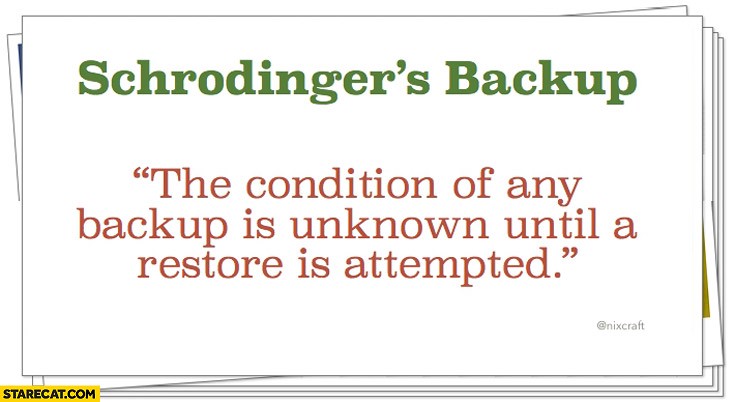Backing up data in a SaaS company
When I started working in IT, life was simple: everything was on servers in a server room or a data center, and everything on those servers needed to be backed up. Data replication had yet to really take off, internet connections were slow, and clouds were only just starting to firm in the sky. Everyone used Windows, and had home directories that were easily mapped with Active Directory-connected logon scripts.
Present day, having the full benefits of a product like Exchange, but without the overhead of managing the troublesome beast, is the norm. File servers are easy to replicate, and it’s realistic to push large volumes of data across an internet connection. On the surface, this makes things seem easier, and some would question the need for backups (they’re dangerous people). It also fragments the landscape: I can’t use one product to back up my email, files, and domain controllers, because some of it is ‘in the cloud’, and some of it is on site.
Backing up SaaS data
This, thanks to a company called Backupify, is trivial: a few clicks, and every email, contact, calendar entry and file in Google Drive is copied from ‘my’ cloud to ‘their’ cloud, and it happens automatically. The same is true for salesforce, but here is where we start to fragment.
Some people use Google Drive. Others use a file server. Where once I would — for example — have a Backup Exec instance pulling data from the file server, and copying it to a tape library, from which I could extract tapes and store them off-site, that approach is now overkill.
Backing up traditional data
By traditional data, I mean data that sits on a file server, possibly from Dell, in a room where I can go and touch it. A server room. As most of our data is now off-site, the economy has shifted, and where once it would be reasonable to invest £10k+ per year for an Asigra implementation, the numbers no longer match up. So what is a director to do?
Take advantage of faster internet connections, and other people’s computers, and put data in the cloud. AWS made this popular and cool, and now Microsoft are in on it. For those of us with Windows servers, their Azure Backup product offers an incredibly cheap, and easy to setup solution to a tedious problem.
Where before I couldn’t justify the cost of an expensive off-site solution, and was hesitant to implement the complexity of an on-site solution for a relatively small volume of data, now I install the Azure backup app on my server, click through a wizard, and check in the next day to see my protected data set. 4TB of data can be protected for under £100/month, and I can sleep well knowing that if my server fails, the restore process is just as easy.




